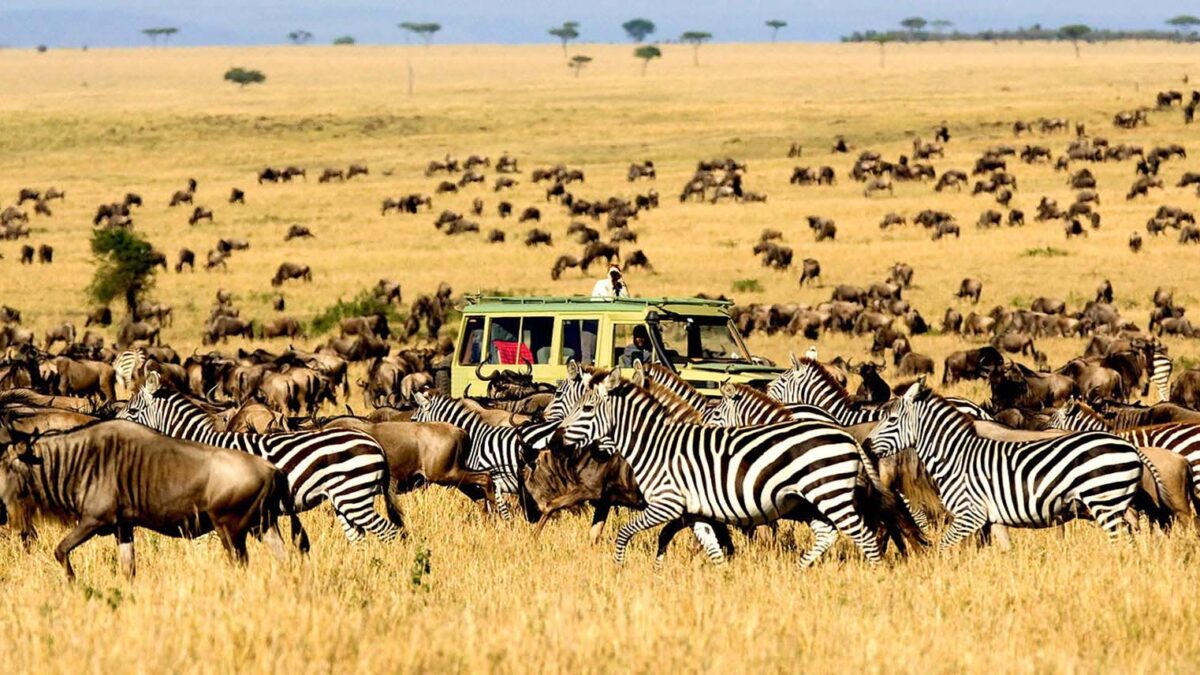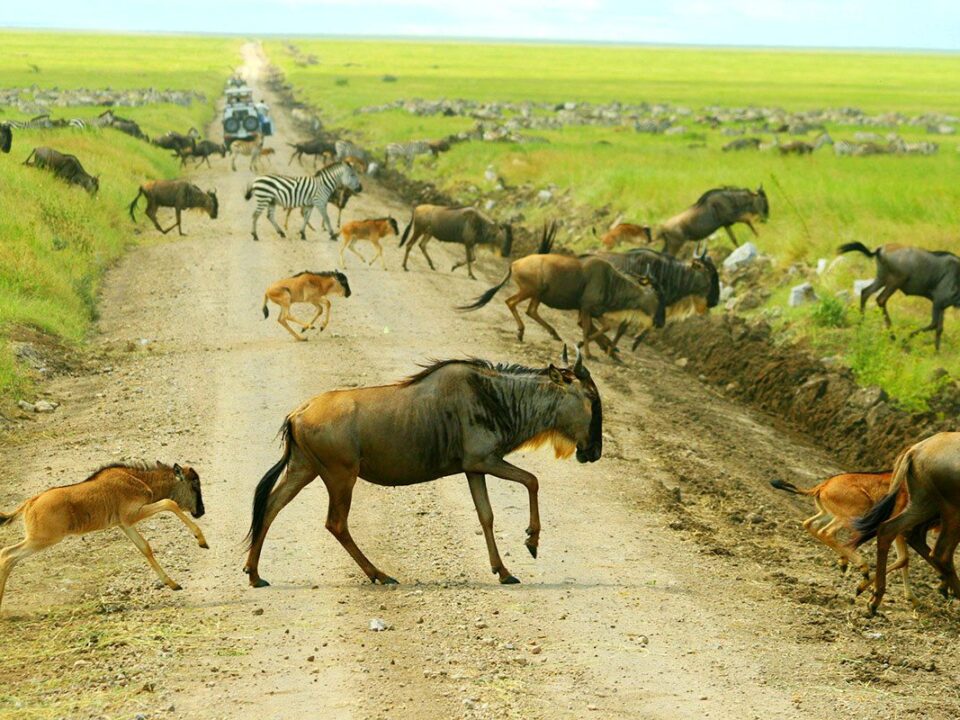Masai Mara Safari & Rwanda Gorillas in the Mist
January 25, 202412-Day Uganda Primate and Wildlife Safari
January 25, 2024Ndutu Area in Serengeti, Tanzania – Gateway to the Great Wildebeest Migration and Calving Season
Discover the enchanting Ndutu area, a vital segment of the Ngorongoro Conservation Area in northern Tanzania, seamlessly merging with the Serengeti. Comprising vast grasslands, Ndutu is a crucial stop on the annual migratory route of hundreds of thousands of wildebeest, zebras, antelope, and their predators. This natural spectacle unfolds between November and March, synchronized with the rains, as herds come to graze and calve. The Ndutu region, adorned with forests around Lake Ndutu and small koppies, is a haven for prolific resident wildlife.
The Ndutu Landscape and Ngorongoro Conservation Area
Ndutu constitutes the northwest sector of the expansive Ngorongoro Conservation Area, spanning over 8,000 km². This conservation area encompasses iconic landmarks such as the stunning Ngorongoro Crater, the historic Olduvai Gorge, verdant forests, lofty mountains, and the boundless plains of Ndutu stretching unfenced into the Serengeti.
A unique feature of the Ngorongoro Conservation Area is its coexistence with human habitation. The Maasai tribe continues to lead a traditional life of subsistence farming within this area, creating a remarkable juxtaposition of ancient customs against the backdrop of abundant wildlife.
Wildlife of Ndutu Area Serengeti Tanzania
From December to May, the plains of Ndutu witness the arrival of colossal herds of wildebeest, zebras, and antelope, drawn to the fertile grasslands for calving. Nature’s inevitability is on display as predators, attracted by the vulnerable young, participate in the intricate dance of life. Even during the dry season, the plains are home to resident game, including giraffes, elephants, hyenas, and antelope, which congregate around waterholes. All six cat species—lion, leopard, cheetah, caracal, serval, and African wildcat—can be spotted throughout the year.
Exploring Ndutu: Things to See and Do
- Game Drives: Experience the awe-inspiring Great Migration when herds adorn the plains.
- Olduvai Gorge: Visit the intriguing archaeological site, shedding light on the origins of humanity.
- Hot Air Balloon Flight: Soar over the plains for a unique aerial perspective.
- Maasai Guided Walks: Immerse yourself in local culture and traditions with Maasai guides.
- Bird Watching: Explore the diverse avian life inhabiting the Ndutu area.
Best Time to Visit – Dry or Wet Season
There’s no wrong time to visit Ndutu, thanks to the abundance of resident game. For those prioritizing the Great Migration, the animals’ movement is influenced by unpredictable rains. Typically, the herds arrive around November and December and depart in April and May. While the Great Migration is a highlight, there’s always plenty to see, ensuring a rewarding experience regardless of the migration’s timing.
How to Get There
- By Car: Ndutu is approximately 280 km from Arusha, a scenic six-hour drive through the Ngorongoro Conservation Area.
- By Air: Multiple airstrips, including Ndutu, Seronera, and Kusini, provide accessibility. A flight from Arusha to Ndutu Airstrip takes just under an hour, with daily scheduled flights during high season.
Serengeti National Park – A Timeless Landscape
Serengeti National Park, renowned for its boundless grasslands, is easily accessible from the Ngorongoro Conservation Area. Spanning from South of Seronera to Olduvai, the Serengeti’s “endless grasslands” in the Masai language make it an iconic wildlife haven. The park’s landscape, shaped by volcanic eruptions millions of years ago, offers a dynamic ecosystem supporting a rich variety of herbaceous plants and wildlife.
During the dry season, the grasslands turn golden, providing a stark contrast to the lush greenery after the rains. The Kopjes, rocky formations scattered throughout, serve as shelters and food sources for antelopes, hyraxes, and felines. The presence of Thomson and Grant gazelles makes the grasslands a favored hunting ground for cheetahs.
Lake Ndutu and Lake Masek – A Haven for the Migration
Situated to the far south of Serengeti National Park, these seasonal salty lakes, Lake Ndutu and Lake Masek, serve as crucial water reserves for wildebeests and zebras during their rest from January to May. The lakes, surrounded by dense Acacia forests and grasslands, become a focal point during the Great Migration’s calving season. Predators seize the opportunity to prey on vulnerable newborns, creating a dramatic yet natural spectacle.
The period between December and May witnesses an influx of the Great Migration to this region. Lions, leopards, giraffes, elephants, caracals, hyenas, and jackals are among the many animals that can be observed during this extraordinary time, making it an ideal season to visit Ndutu and Masek.
Olduvai Gorge – A Glimpse into Human Origins
Olduvai Gorge, a significant site for human history, stands as a testament to humanity’s African origins. While the excavation area remains off-limits due to ongoing archaeological work, the opportunity to witness the valley where our species originated creates a powerful emotional connection. Visitors can explore the museum displaying artifacts discovered in the region.
In the dry season, when the Great Migration is elsewhere, the landscape adopts a dry and dusty ambiance. Despite the absence of the migration, Ndutu’s allure persists, hosting fascinating wildlife throughout the year, especially in the forested zones near Ndutu in the Serengeti area.


